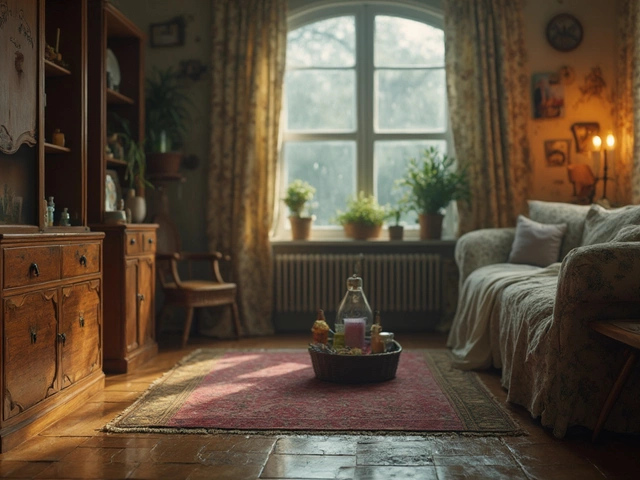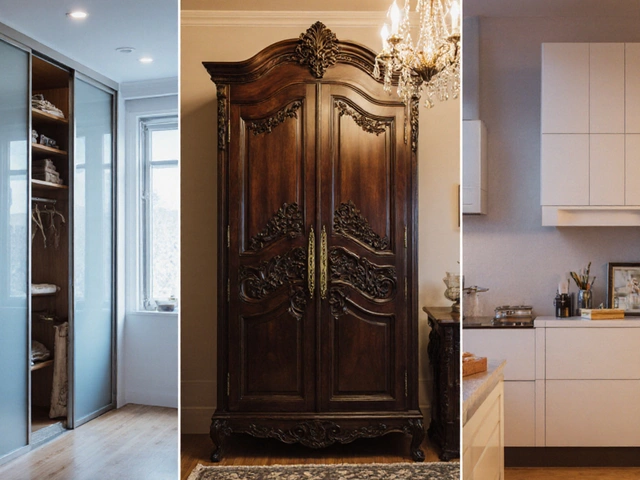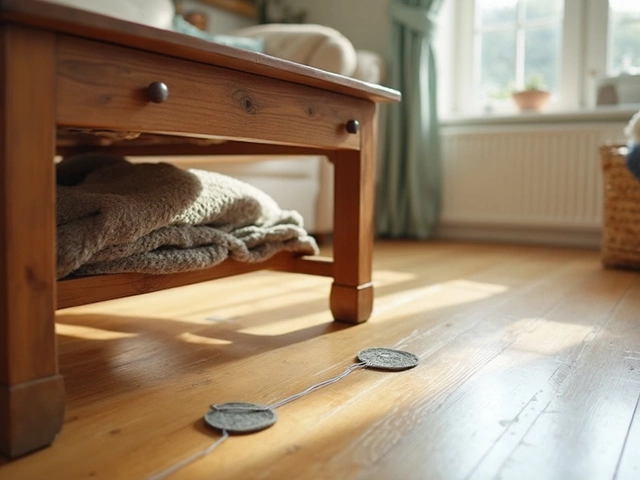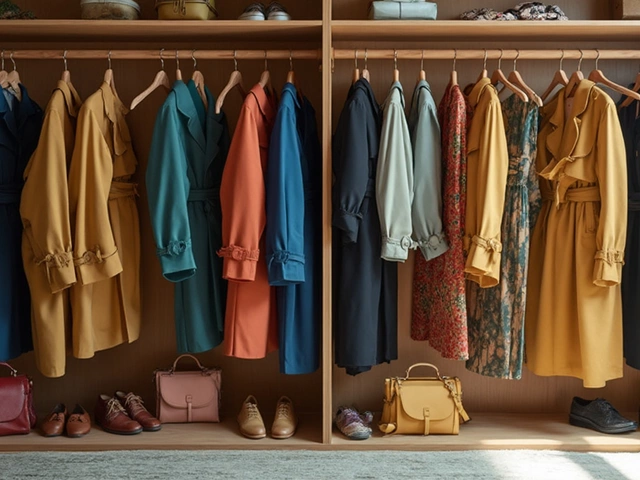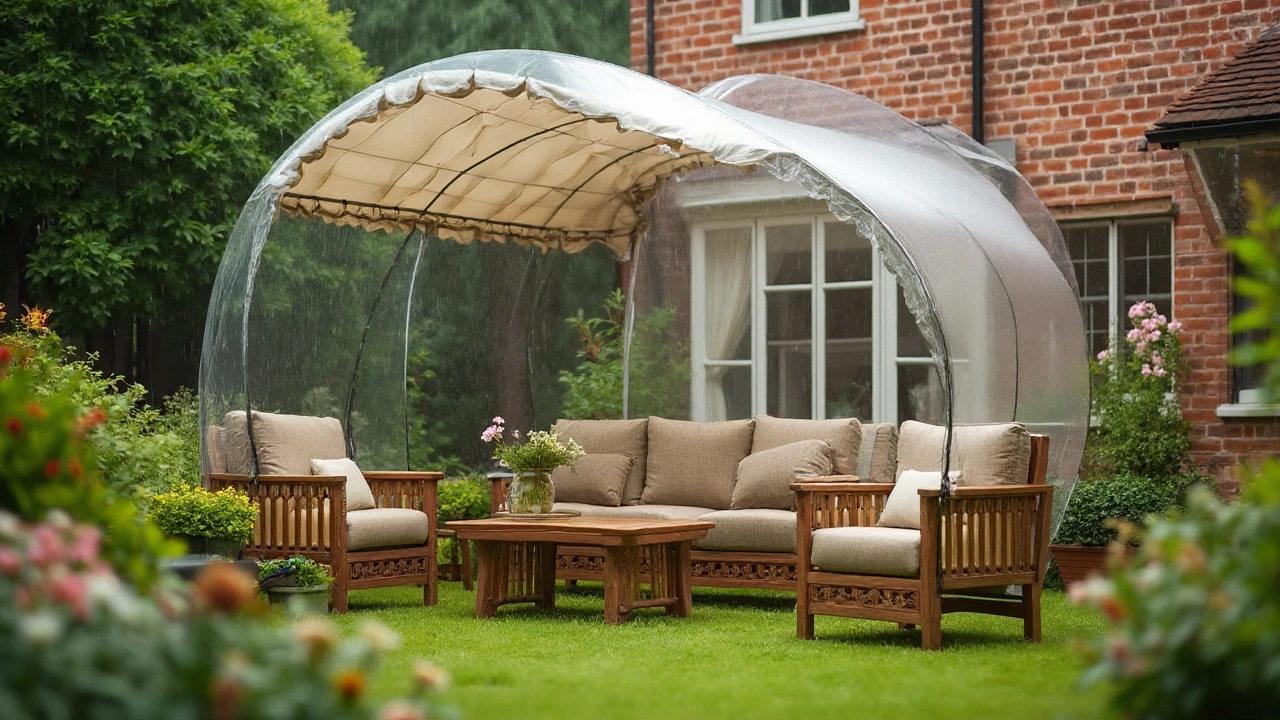 4
Aug,2025
4
Aug,2025
Rain doesn’t just make the grass greener—it can absolutely wreck your garden furniture if you’re not careful. Ever seen that once-inviting lounge chair covered in mildew, warped wood, or a rusted mess? Mother Nature doesn’t fool around, and once that downpour hits, furniture left out takes a serious beating. What most people don’t realize: rain damage doesn’t stop the second the sun comes out. Water lingers, sneaks into cracks, and slowly takes apart your lovely patio set piece by piece. Let’s talk about how to keep your outdoor stuff looking great, fight off that dreaded sogginess, and save yourself from the pain of shopping for replacements every summer.
Understanding How Rain Damages Garden Furniture
The trouble starts at the molecular level. Wood sucks up water like a sponge—oak especially, with its big pores, soaks up every drop it can get. Softwoods like pine swell up, start to rot, and soon you’re dealing with splinters and mold. Teak does a bit better, thanks to its natural oils, but without care, it too will weather to a silvery gray and might even crack. Metal isn’t safe, either. Rain brings rust, especially if you’ve skipped repainting chipped spots on older steel pieces. For aluminum, plain water isn’t so much the issue, but that nasty combo of moisture and air pollution triggers corrosion and pitting over time. Wicker or rattan? Traditional natural varieties turn brittle and moldy, while synthetic versions last longer (as long as they’re not cheap imports that crack in the cold). Cushions take a hit, too—foam fills turn into science experiments if water has nowhere to drain and mildew moves in.
Here’s a stat that surprises most folks: according to the European Federation of Furniture Manufacturers, nearly 40% of garden furniture complaints stem from water damage that could’ve been prevented with basic protection. Rot, rust, and mold head the list. That’s not just bad luck—it’s usually a sign of being caught off guard. Know your enemy. Once you accept that rain isn’t a rare guest but a regular part of outdoor living, you’ll take steps to guard your investment. If you’re wondering what materials really can handle rain, check this small data table for quick reference:
| Material | Rain Resistance | Typical Lifespan (with protection) |
|---|---|---|
| Hardwood (Teak, Iroko) | Good (with oiling/sealant) | 20+ years |
| Softwood (Pine, Cedar) | Poor (unless treated) | 3-7 years |
| Powder-coated Steel | Fair (chips will rust) | 10-15 years |
| Wrought Iron | Fair (high maintenance) | 10-20 years |
| All-weather Wicker (Resin) | Excellent | 10+ years |
Choosing the Right Garden Furniture for Wet Weather
Not all garden furniture is created equal when it comes to rain. The first mistake people make is buying whatever looks best on the showroom floor without thinking about rain resistance. If you live somewhere with heavy, relentless showers—like Manchester or Portland—then investing in the right materials is your first line of defense. Teak is the king of outdoor wood, with oils that fight off moisture. Acacia, eucalyptus, and iroko aren’t far behind—they all resist warping and rot, especially if you keep them occasionally oiled.
For metals, you want powder-coated aluminum or stainless steel. The powder-coating is a kind of tough, baked-on paint that won’t peel and keeps metal from rusting. Cast aluminum is lightweight, tough, and immune to rust, which explains why so many modern outdoor sets use it. Stainless steel resists corrosion but does best away from salt-laden air, like near the beach. Wrought iron is classic but a pain—unless you love scrubbing and repainting, skip it for rainy climates.
Wicker fans should look for resin wicker, also called all-weather or PE rattan. This stuff laughs in the face of rain, won’t break down, and doesn’t fade fast. Avoid cardboard-like low-cost versions—they’ll split in no time. Plastic? Go for UV-protected, molded pieces if you must, but understand they can crack or look cheap with a few good freezes and thaws. When it comes to cushions, there’s only one choice: high-quality outdoor fabrics like Sunbrella. These dry fast, resist fading, and shrug off mold better than cotton or generic synthetics.
The secret weapon most folks don’t know: look for hidden design features like slatted tabletops or open-weave seats. These let water drain through instead of pooling. If you see a garden sofa that looks like it belongs in your living room—run. Water collects in nooks, and you’ll end up tipping it upside down every time it rains. With smart shopping, you’ll start with furniture that can actually survive outside, giving everything else you do a real chance of working.
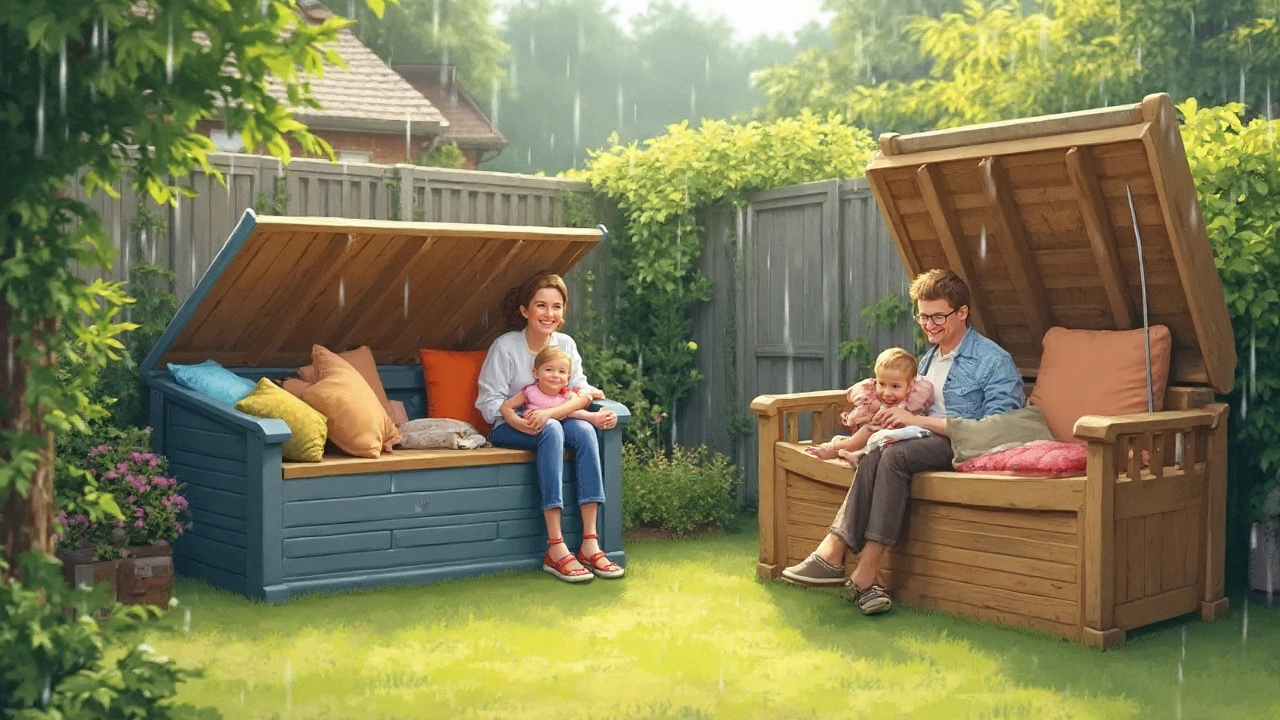
Waterproof Covers and Proper Storage Solutions
Even if you’ve picked weatherproof materials, covering your garden furniture is your best insurance policy. Think of covers as raincoats for your patio set—solid, fitted, and made from materials that don’t just keep out water, but also breathe a little so you don’t get mold from trapped moisture. The market’s stuffed with options, but here’s what matters: polyester with a PVC or polyurethane backing works best. Look for double-stitched seams and tie-down straps—gusty summer storms love to turn cheap covers into kites.
Make sure your cover isn’t too tight. If it hugs the contours too closely, water can’t run off and you get mildew underneath. Many brands include built-in vents, which let airflow stop the steamy, sweaty conditions that mold loves.
So, where do you keep furniture when the forecast calls for days of rain? If you’ve got the space, a garden shed or garage is ideal. No garage? Consider a waterproof deck box or dedicated storage bench. For folding chairs and collapsible tables, stackability comes in handy—just throw an old towel between layers to wick away stray drops. Think vertical, not horizontal, when storing for winter; moisture will always run down, so prop larger pieces to encourage drainage.
Cushions are a different story—they’ll never survive months outside, cover or not. Grab a deck box for them or haul them inside when it looks stormy. A study in 2023 by the UK Home Retail Association found that 72% of mold issues on outdoor cushions came from leaving them under covers on damp furniture—not from direct rain. Don’t trust waterproof claims blindly; condensation kills faster than raindrops ever do.
- Use covers with proper breathability and tie-downs.
- Choose storage solutions that allow airflow—no airtight plastic bins for cushions.
- Store vertically to support drainage and speed up drying.
- Bring in cushions quickly at signs of rain; never trust them outside all winter.
DIY Waterproofing Techniques and Maintenance
You don’t need to wait for damage to start fixing it. Waterproofing gives you the power to armor your garden furniture against endless drizzle and downpours. For wood, it’s as easy as applying a dedicated wood sealer or oil. Marine-grade teak oil is the standard—rub it on once a year for hardwoods, and every six months for softwoods. The idea is to keep water from soaking into the grain. Varnishes and sealants bring extra shine, but skip anything that leaves a film if your set gets heavy use; scratches turn into water entry points. Look for products with high UV protection for bonus points—sunshine breaks down finishes as fast as water.
Metal frames need regular touch-ups—grab a can of outdoor spray paint (the kind that sticks to metal) and tackle nicks fast. Rust spots? Sand them down, treat with rust converter, then repaint. Don’t wait—rust spreads under paint long before you notice.
Plastic and resin generally just need a gentle scrub with soapy water, but if you notice fading or small cracks, treat with a UV protectant spray once the set is clean and dry. Bleach is tempting for mold on plastic but can weaken the frame. For “wicker” (real or fake), vacuum debris out of the weave and touch up chips or scratches with matching spray paint. Never use pressure washers on wicker—it’s too easy to splinter the fibers.
Cushions and fabrics can be sprayed with fabric protector (like Scotchgard) every few months, though even the best fabric treatments fade over endless washes and storms. If covers are removable, wash them on the delicate cycle with a gentle detergent and air-dry. Don’t iron, or you’ll kill the waterproof layer.
- Inspect your garden furniture for damage every spring and fall.
- Sand and re-seal wood every year—or after a very wet summer.
- Touch up metal nicks instantly to keep rust from sneaking in.
- Clean and spray cushions with fabric sealant at season start.
- Don’t forget to dry covers fully before putting them on storage furniture.
This small seasonal effort beats replacing your whole set after one soggy winter. You’ll be amazed how much nicer pieces look after a quick annual refresh.
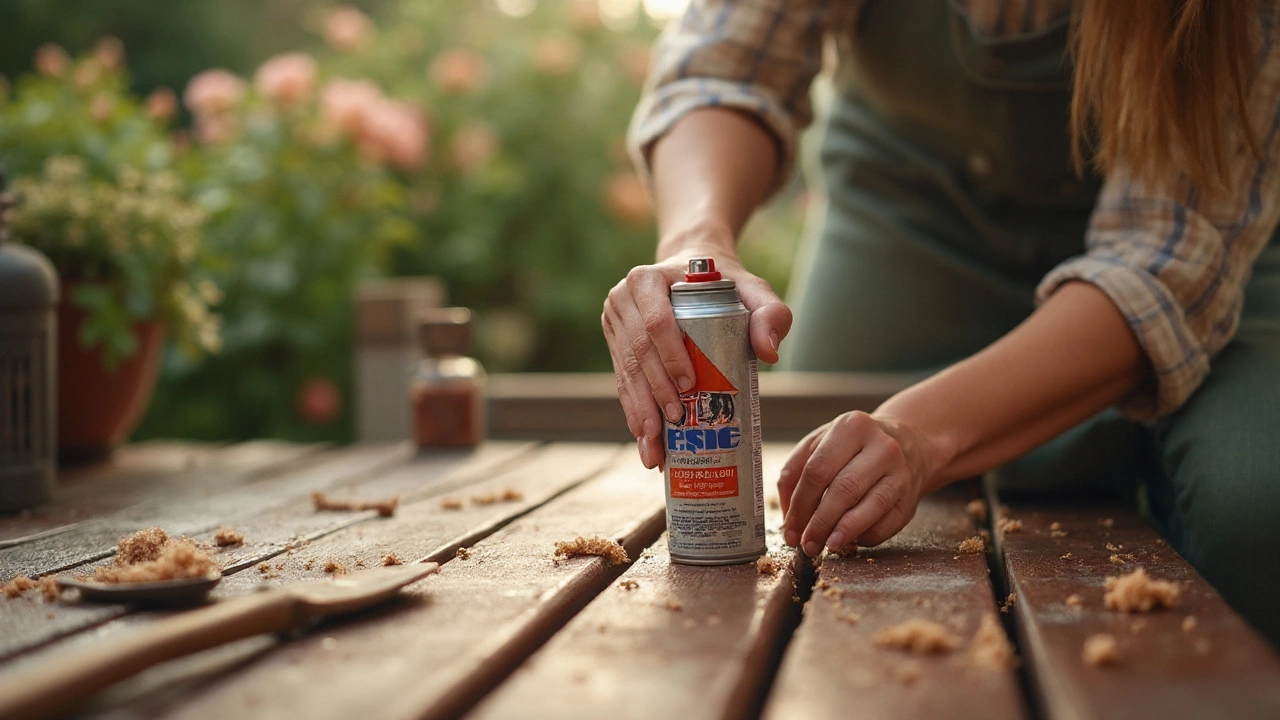
Smart Daily Habits for Rain Protection
The real difference isn’t just what you buy or what products you use—it’s the habits you develop. Weather can change fast, and if you aren’t a fortune teller, you need a system that doesn’t rely on checking the forecast every ten minutes. Start by keeping your covers handy. Some folks store them in a hanging basket near the door, others in a waterproof tote right on the deck. The point: you want to grab them quickly the moment dark clouds roll in.
When rain’s in the air, prop up cushions to let water run off—or better, whisk them inside before it starts. If pooling happens on tables, tilt surfaces or tip chairs to one side. I’ve seen people just flip chairs upside-down before a storm so water doesn’t collect on the seat. It’s simple, low-tech, and saves hours of scrubbing away green slime.
Right after heavy rain, inspect your outdoor pieces for puddles or trapped moisture. Wipe them dry, even if they’re supposed to be waterproof. It cuts down on the risk of mold and stops metal screws or bolts from quietly rusting. If you can, rearrange your furniture every few weeks—sun and air will hit different surfaces, helping to fully dry missed spots.
For garden parties or family BBQs, set up a pop-up canopy or umbrella if the weather feels iffy. Give your seating a fighting chance, rather than letting it soak for hours. When you buy new furniture, consider spending a little extra for spare parts: replacement feet, caps, and cushion covers aren’t exciting now, but after a couple of years, they’ll turn a faded set into something fresh. A 2024 poll by Outdoor Living Innovators found that 65% of people who regularly move or protect their furniture after rain sessions reported almost double the lifespan compared to those who left everything exposed.
- Keep covers close and use them at the first sign of rain
- Move cushions indoors or into a dry deck box
- Tilt or flip seating and tables to let water drain
- Towel off pooled water quickly, no matter the material
- Shift furniture now and then for even drying and less mold
It isn’t rocket science—just a few tweaks in your routine, and rain will feel a little less like an enemy and more like a passing annoyance.

